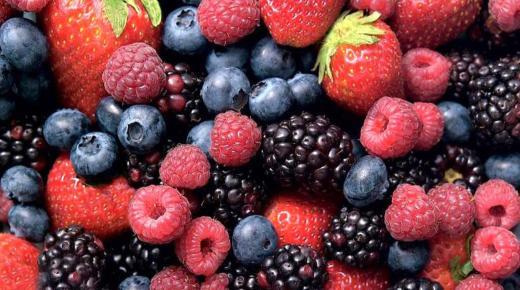Ukraine looks to expand fruit and berry exports to the European Union

Imports of Ukrainian fresh fruit and berries to the European market continue to rise. An FAO training seminar here today is aimed at helping farmers prepare for even greater volumes of fruit and berry exports.
The European Union already grows fresh fruit and berries at significant levels, but consumer demand far outstrips internal production.
Filling that gap with imports from Ukraine is one of the key subjects of today’s seminar. Organized by FAO in collaboration with Ukraine’s Ministry of Agrarian Policy and Food and the national association “Ukrsadprom,” the training will also cover good and sustainable agricultural practices for fruit and berry production.
With the annual value of fresh small fruit imports to the EU averaging 641 million euros, and average annual growth of 14.9 percent over the past five years, it is a fast and dynamic market.
Ukraine’s current average exports to the EU are 3.4 million euros per year – only a 0.5 percent share of EU imports – indicating a massive opportunity for Ukraine to expand its share.
Ukraine’s current average exports to the EU total €3.4 million –
only a 0.5 percent share of EU imports. This indicates a massive
opportunity for Ukraine to expand its share.
Participants include representatives of ministries, Ukraine’s State service for food safety and consumer protection, producer associations, and agribusiness, along with national and international trade experts. It is the first event on fruit export issues convened by FAO under a project on technical assistance to Ukraine’s Ministry of Agrarian Policy and Food. It will be followed by a workshop next week in Lviv on benefitting from application of the autonomous trade preferences for Ukraine, and from the recent signing of the EU-Ukraine Deep and Comprehensive Free Trade Area agreement.
The agreement – together with competitive prices and cheaper and shorter logistics than competing South American and African countries – creates real opportunity for Ukraine to increase its exports to the EU.
However, this will require compliance with the EU trade rules and application of specific market standards for packing and marketing practices.
To support the country’s efforts at greater integration with international markets for agrifood products, FAO is implementing a Regional Initiative for Improving Agrifood Trade and Market Integration in Europe and Central Asia.
“As a part of the Initiative,” said FAO trade economist Iryna Kobuta, “FAO is working with the Ministry of Agrarian Policy and other actors in Ukraine to develop their capacity to expand horticultural product exports to EU markets.”
Participants in the Lviv workshop next week are expected to improve their understanding and application of various procedures and mechanisms for products to enter the EU market. Trainers will provide practical guidelines on how to organize the work within national governments, and establish mutually beneficial relations with local buyers.
Trainers will engage participants in hands-on exercises applying different EU rules, and share their analysis of latest trends in the market for fresh and frozen products.
6 December 2017, Kyiv, Ukraine
